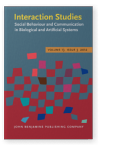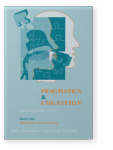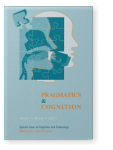Shaun Gallagher
List of John Benjamins publications for which Shaun Gallagher plays a role.
2012 Getting interaction theory (IT) together: Integrating developmental, phenomenological, enactive, and dynamical approaches to social interaction Interaction Studies 13:3, pp. 436–468 | Article
We argue that progress in our scientific understanding of the ‘social mind’ is hampered by a number of unfounded assumptions. We single out the widely shared assumption that social behavior depends solely on the capacities of an individual agent. In contrast, both developmental and phenomenological… read more
2012 Neurons, neonates and narrative: From empathic resonance to empathic understanding Moving Ourselves, Moving Others: Motion and emotion in intersubjectivity, consciousness and language, Foolen, Ad, Ulrike M. Lüdtke, Timothy P. Racine and Jordan Zlatev (eds.), pp. 167–196 | Article
The problem I want to address is a classic one in the philosophy of mind. In that context it is called the problem of other minds, but it is a problem that is debated in and across a number of disciplines and approaches – the problem of intersubjectivity in phenomenology, empathy or understanding… read more
2010 Concluding discussion The Emergence of Consciousness: A top-down, social phenomenon?, Cole, Jonathan and Marcelo Dascal † (eds.), pp. 553–559 | Article
2010 Defining consciousness: The importance of non-reflective self-awareness The Emergence of Consciousness: A top-down, social phenomenon?, Cole, Jonathan and Marcelo Dascal † (eds.), pp. 561–569 | Article
I review the problem of how to define consciousness. I suggest that rather than continuing that debate, we should turn to phenomenological description of experience to discover the common aspects of consciousness. In this way we can say that consciousness is characterized by intentionality,… read more
2010 Growth points from the very beginning The Emergence of Protolanguage: Holophrasis vs compositionality, Arbib, Michael A. and Derek Bickerton (eds.), pp. 117–132 | Article
Early humans formed language units consisting of global and discrete dimensions of semiosis in dynamic opposition, or ‘growth points.’ At some point, gestures gained the power to orchestrate actions, manual and vocal, with significances other than those of the actions themselves, giving rise to… read more
2008 2. Understanding others through primary interaction and narrative practice The Shared Mind: Perspectives on intersubjectivity, Zlatev, Jordan, Timothy P. Racine, Chris Sinha and Esa Itkonen (eds.), pp. 17–38 | Article
2008 Growth points from the very beginning Holophrasis vs Compositionality in the Emergence of Protolanguage, Arbib, Michael A. and Derek Bickerton (eds.), pp. 117–132 | Article
Early humans formed language units consisting of global and discrete dimensions of semiosis in dynamic opposition, or ‘growth points.’ At some point, gestures gained the power to orchestrate actions, manual and vocal, with significances other than those of the actions themselves, giving rise to… read more
2007 Social cognition and social robots Mechanicism and Autonomy: What Can Robotics Teach Us About Human Cognition and Action?, Quilici Gonzalez, Maria Eunice, Willem F.G. Haselager and Itiel E. Dror (eds.), pp. 435–453 | Article
Social robots are robots designed to interact with humans or with each other in ways that approximate human social interaction. It seems clear that one question relevant to the project of designing such robots concerns how humans themselves interact to achieve social understanding. If we turn to… read more
2006 The narrative alternative to theory of mind Radical Enactivism: Intentionality, Phenomenology and Narrative, Menary, Richard (ed.), pp. 223–229 | Article
2005 Dynamic models of body schematic processes Body Image and Body Schema: Interdisciplinary perspectives on the body, De Preester, Helena and Veroniek Knockaert (eds.), pp. 233–250 | Article
2004 5. Agency, ownership, and alien control in schizophrenia The Structure and Development of Self-Consciousness: Interdisciplinary perspectives, Zahavi, Dan, Thor Grünbaum and Josef Parnas (eds.), pp. 89–104 | Chapter
2000 Self-reference and schizophrenia: A cognitive model of immunity to error through misidentification Exploring the Self: Philosophical and psychopathological perspectives on self-experience, Zahavi, Dan (ed.), pp. 203–242 | Article










